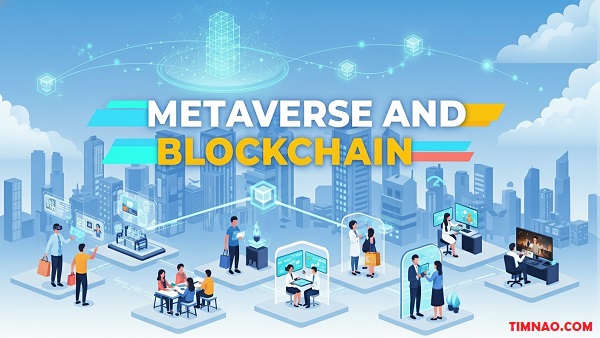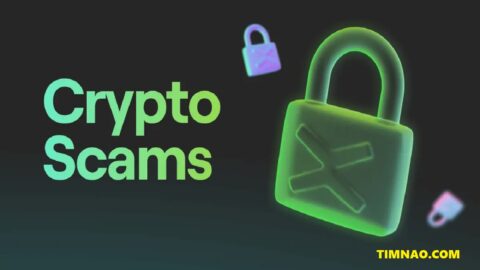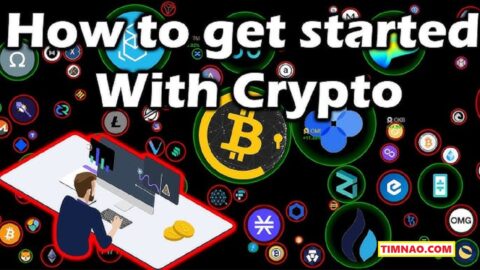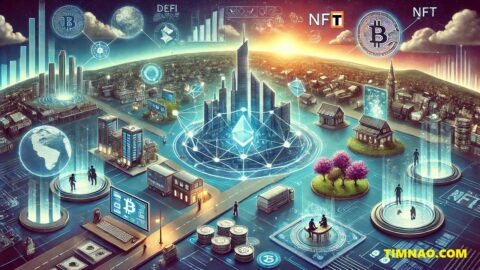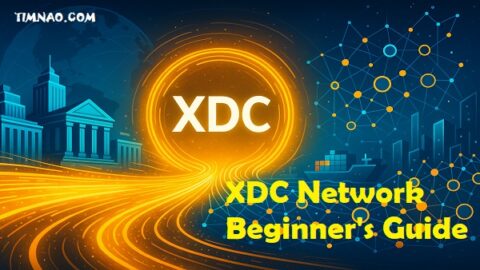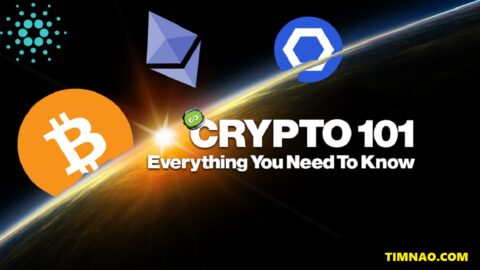Metaverse and Blockchain Breakthroughs: A No-Hype, High-Impact Beginner’s Guide 🚀
Metaverse and blockchain are finally moving from buzzwords to practical building blocks. These technologies are no longer futuristic ideas—they’re tools people are using today to solve real problems.
If you’re new to this space, you’re in the right place. This guide explains how metaverse and blockchain work together, what they’re good for, and how you can start small without getting lost in jargon.
We’ll unpack real metaverse use cases, show you useful blockchain applications, and walk through a clear, beginner-friendly action plan that you can execute in weeks—not months.
Along the way, you’ll find tools, templates, and guardrails to help you avoid common mistakes and actually build something that works in the real world.
According to the Metaverse and Blockchain Use Cases and Applications reference document, these technologies are already transforming industries like healthcare, manufacturing, and education. They enable immersive training, traceable supply chains, and secure data sharing that’s faster, safer, and more transparent than ever before.
Table of Contents
- 1. 🧭 What You’re Really Building (and Why It Matters Now)
- 2. 🧱 The Building Blocks: XR, Game Engines, Wallets & Chains
- 3. 🎮 Gaming, Worlds & Social Spaces (Beginner Wins)
- 4. 🛍️ Retail & Ecommerce: Try-Ons, Loyalty & Authenticity
- 5. 🎓 Learning & Training: Faster Skills, Safer Practice
- 6. 🏥 Healthcare: Beyond Telehealth to Hands-On Simulations
- 7. 🚚 Supply Chains & Proof of Origin: Trust You Can Show
- 8. 🏠 Real-World Assets & Tokenization
- 9. 🎟️ Media, Events & the Creator Economy
- 10. 🪪 Identity & Access: Log In with Ownership
- 11. 📶 DePIN & the Physical World: Networks Built by Users
- 12. 🧰 Your 30-Day Starter Plan (Step-by-Step)
- 13. 🛡️ Security, Compliance & Risk: Simple Rules to Stay Safe
- 14. 📊 Metrics That Matter: How to Prove Value
- 15. 🔭 What’s Next: Trends to Watch in 2025
- 16. 🙋 FAQs: Beginner Questions About Metaverse and Blockchain Answered
- 17. ✅ Key Lessons & Takeaways
🧭 What You’re Really Building (and Why It Matters Now)
When people hear the word metaverse, they often picture futuristic headsets, holograms, or massive digital cities. But if you’re a beginner, that image can feel intimidating and far away from practical reality. Here’s the truth: the metaverse isn’t about building a fantasy world — it’s about creating interactive digital spaces where people can connect, learn, and transact in ways that feel natural and meaningful.
At its core, the metaverse is the visual and social layer — a collection of immersive 3D environments built using extended reality (XR) technologies like virtual and augmented reality. The blockchain, on the other hand, acts as the invisible backbone that ensures ownership, trust, and verifiable value across these digital spaces. Together, they form a foundation where experiences are interactive and secure, where users don’t just visit a space — they own part of it.
For beginners, the best way to think about this relationship is simple:
- XR = Experience and interaction
- Blockchain = Ownership and trust
The synergy of these two technologies matters more than ever right now. Over the last few years, the cost of immersive tools and blockchain infrastructure has dropped dramatically. You can now build interactive 3D experiences using free or low-cost tools and issue blockchain-based tokens without spending thousands on gas fees. Meanwhile, companies like Meta, Apple, and NVIDIA are pushing the boundaries of XR hardware and virtual collaboration tools — meaning the entry barrier is lower than it’s ever been.
If you’re wondering why now, consider these three reasons:
- Hardware accessibility: Devices like the Meta Quest and Apple Vision Pro have made immersive experiences more comfortable and available for everyday users.
- Affordable blockchain tools: Thanks to updates like Ethereum’s Dencun upgrade and the rise of Layer-2 solutions, blockchain transactions are now faster and cheaper.
- Demand for authentic digital ownership: People want digital assets that are traceable, transferrable, and truly theirs — from learning certificates to art, fashion, and event passes.
In short, we’ve reached a point where technology, cost, and demand have aligned. You no longer need to be a coder or an engineer to build something valuable in this space. You just need to understand what problem you’re solving — and build a small, meaningful experience around it.
Start by thinking about proof and experience. Use blockchain wherever proof matters — proof of access, proof of ownership, or proof of completion. Use the metaverse wherever experience matters — training, learning, trying, or interacting. The power of these two worlds comes from linking both: when an experience has proof, it becomes trusted; when proof has experience, it becomes engaging.
(Next, let’s look at the essential tools and building blocks you’ll need to start creating these experiences — even if you’ve never built in 3D or touched a blockchain before.)
🧱 The Building Blocks: XR, Game Engines, Wallets & Chains
To build a metaverse experience backed by blockchain, you don’t need to reinvent the wheel. Think of it as assembling Lego pieces — each tool plays a specific role. Once you understand what each block does, you can mix and match them based on your needs.
1. Choose Your Platform: Start Web-First, Then Expand
Many beginners get stuck thinking they must build for VR headsets right away. Don’t. The fastest way to start is web-first — meaning your 3D space runs right in a browser or mobile device. You can always add VR or AR support later.
Here’s the smart progression:
- Web-based 3D: Use tools like Babylon.js, Three.js, or Unity’s WebGL export to build interactive scenes that run on laptops or phones.
- Optional VR: Once the experience is stable, add compatibility for devices like the Meta Quest or Apple Vision Pro to offer a deeper sense of presence.
- Optional AR: If your goal is product visualization or education, integrate augmented reality via Apple ARKit or WebAR so users can view objects in their own environment.
2. Pick Your Game Engine: The Canvas of the Metaverse
Game engines are the engines (literally) behind most immersive experiences. They handle rendering, physics, lighting, and interaction — freeing you from starting from scratch.
- Unity: Great for beginners, training simulations, and lightweight games. Its visual scripting tools make it friendly for non-coders.
- Unreal Engine: Best for cinematic or highly realistic scenes (architecture, entertainment, film).
- NVIDIA Omniverse: Ideal for industrial use cases, digital twins, and multi-user collaboration. It uses OpenUSD, an emerging standard for interoperability across 3D tools.
💡 Pro Tip: Start with one small interactive space — a single lobby, a meeting room, or a mini gallery. Aim for fast load times and clear user actions. A small, polished prototype beats a massive unfinished world.
3. Wallets: The Digital Keychain
In blockchain, your wallet is your user identity. It stores your tokens, credentials, and permissions. But for new users, setting up a crypto wallet can feel complicated — so as a creator, your job is to make it invisible at first.
Here’s a beginner-friendly approach:
- Start with embedded wallets — wallets created automatically when users sign up via email or social login. These can be upgraded later.
- Support popular wallets like MetaMask or Ledger for advanced users who want full control.
- Always give users a simple way to export their wallet or assets if they wish — transparency builds trust.
In short, let people join and enjoy first; introduce blockchain only when it provides clear value, like claiming rewards, unlocking perks, or proving ownership.
4. Choose the Right Blockchain
Not every blockchain is created equal. Some are great for enterprise use, others for creative or social apps. As of 2025, three ecosystems dominate mainstream adoption:
- Ethereum + Layer 2s (Arbitrum, Optimism, Base): Best for flexibility and developer tools. Layer 2s dramatically reduce gas fees.
- Polygon: Enterprise-friendly, widely integrated, stable, and low-cost.
- Solana: High-speed and low-fee — great for games and apps that require many quick interactions.
If you’re experimenting, start on testnets (free practice networks) before going live. Focus on reducing transaction friction — beginners shouldn’t be paying $10 per click.
5. Storage and Data
Blockchain shouldn’t store heavy files like images, 3D assets, or videos — it’s inefficient and expensive. Instead, store large assets off-chain and only keep their fingerprints (hashes) on-chain.
Common tools include:
- IPFS: Peer-to-peer decentralized storage.
- Arweave: Permanent and tamper-proof storage for long-term assets.
- Chainlink: Connects real-world data (weather, supply chain events, prices) to blockchain smart contracts.
This hybrid setup gives you scalability, cost-efficiency, and the immutability benefits of blockchain.
6. Security and Privacy by Design
Security isn’t optional; it’s the foundation of trust. Many blockchain hacks stem from avoidable mistakes: unaudited contracts, unlimited permissions, or careless key management.
Keep it simple:
- Use audited smart contract templates or libraries like OpenZeppelin.
- Include a “pause” switch to stop operations during an emergency.
- Store minimal personal data.
- Be transparent about what information is being collected and why.
7. Your 7-Day Starter Checklist
If you’re starting from scratch, use this one-week plan to build your first prototype:
- Day 1–2: Pick one clear goal (e.g., “Create a virtual booth where users can collect a reward token”).
- Day 3: Choose your engine (Unity or a web framework) and build a simple 3D scene.
- Day 4: Add login via email and auto-create an embedded wallet.
- Day 5: Issue a basic token (like a badge or pass) to users.
- Day 6: Make the token do something — unlock content, open a door, or show hidden info.
- Day 7: Test with a few friends, record feedback, and fix the top three pain points.
If it takes longer, that’s fine. The key is to launch something small and learn fast.
(Now that you know the core tools and setup, let’s put them to work — starting with one of the easiest, most engaging metaverse applications: gaming and social spaces.)
🎮 Gaming, Worlds & Social Spaces (Beginner Wins)
Gaming and social interaction are the most natural entry points for learning how the metaverse and blockchain work together. They’re engaging, measurable, and low-risk — perfect for beginners to experiment with.
1. The 30-Minute Open House
Imagine you’re hosting an open house event — but instead of Zoom, it’s inside a 3D space your guests can explore.
Here’s how to make it work:
- Let users join as guests using email (no wallet needed).
- Design three simple tasks — explore, learn, and interact. For example:
- Visit a welcome booth and watch a short intro video.
- Click two interactive exhibits.
- Answer a quick quiz or feedback poll.
- Reward completion with a claimable token (a digital badge or discount coupon).
- On your website, users can redeem their badge for an exclusive benefit — a PDF, a discount code, or early access to content.
Metrics to track:
- 70% of users complete all tasks.
- 30% redeem their reward within 24 hours.
- Average session length: 10 minutes.
The beauty of this model is that it connects virtual engagement with real-world value. You’re not just entertaining — you’re creating a repeatable onboarding funnel.
2. Token-Gated Meetups
Token-gated meetups turn digital tokens into keys for private events. Only those holding the right token (NFT, badge, or credential) can enter.
How to build one:
- Distribute tokens via a landing page or airdrop to your audience.
- Require the token to access your virtual event room.
- Offer small incentives: guest passes, Q&A badges, or post-event rewards.
- After the session, mint a participation token or certificate.
These micro-events are perfect for communities, educators, or product launches. They reward loyalty and create a sense of belonging — something ordinary links or Zoom sessions can’t replicate.
3. Skill Sprints and Micro-Training
Instead of boring video courses, create 5–10 minute interactive training missions.
Example: A retail team can practice customer service scenarios in a virtual store, choosing dialogue options to resolve an issue. When they finish, the system automatically issues a blockchain-backed credential confirming their completion.
This approach makes learning measurable and engaging. Managers can verify credentials, and employees feel proud of their digital achievements.
4. Smart Gamification Principles
Gamification doesn’t mean gimmicks or over-design. Done right, it keeps people motivated without distracting them.
Use these rules:
- Useful rewards: Discounts, exclusive access, or valuable content.
- Clear progress: Show milestones, not endless scores.
- Personal recognition: Display badges or levels that represent real effort.
Keep it meaningful, not flashy. The goal is habit-building, not addiction.
5. Tools to Try
You don’t need a custom tech stack to begin. Start with tools that get you results quickly:
- Build with Unity, Unreal Engine, or lightweight 3D frameworks.
- Host early tests on Roblox or WebXR platforms to learn user behavior.
- Use OpenSea to manage or distribute NFTs or passes.
- Store media on IPFS or Arweave.
- Automate token verification with Chainlink.
6. Common Beginner Mistakes
- Forcing crypto too early: Always start with guest mode; add blockchain only when there’s a real benefit.
- Overly heavy scenes: Optimize graphics; prioritize mobile access.
- Unclear rewards: State the reward value up front.
- Lack of support: Add FAQs and a 60-second “How it works” video.
- No fail-safe: Include pause or upgrade mechanisms in your contracts.
Avoiding these traps will keep your first launch smooth and frustration-free.
7. Measuring Success
Track just three categories of data:
- Onboarding: How many people enter your experience?
- Activation: How many claim or redeem rewards?
- Retention: How many return or share with others?
Even 20–30 test users can reveal powerful insights. Iterate weekly, not yearly.
8. A 30-Day Roadmap
Week 1: Build a small web scene and set up an embedded wallet system.
Week 2: Launch a 3-step quest with a clear reward.
Week 3: Run a small open event; track engagement metrics.
Week 4: Add token gating or credentials; refine based on data.
By the end of the month, you’ll have a working metaverse prototype with real user data — something you can improve, expand, and even monetize.
(Next, we’ll explore how these same ideas extend to education, healthcare, and real-world applications — where blockchain and the metaverse create value far beyond entertainment.)
🛍️ Retail & Ecommerce: Try-Ons, Loyalty & Authenticity
Retail is one of the easiest and most exciting entry points into the metaverse and blockchain world. Why? Because it solves real, everyday problems—like returning the wrong size, verifying if a product is authentic, or rewarding loyal customers more intelligently.
The combination of AR-powered experiences and blockchain-backed proofs can help brands deliver shopping that feels personal, transparent, and fun. For beginners, this space offers quick wins that can show tangible results fast.
1. Virtual Try-Ons: Making Shopping More Human
If you’ve ever used an app to see how glasses look on your face or how a sofa fits in your living room, you’ve already tasted the metaverse in retail. Virtual try-ons use augmented reality (AR) to let shoppers visualize products before buying.
For brands, the benefits are obvious:
- Fewer returns because customers can try before they buy.
- Better engagement since people spend more time exploring products.
- A more interactive, memorable shopping experience.
Getting started:
- Use ready-made tools like Apple’s ARKit or Snap AR for mobile-based AR try-ons.
- If you’re using Shopify, explore its AR integration—it lets you upload 3D models of products that users can view directly in their space.
- For fashion brands, apps like Zero10 offer virtual fitting-room solutions.
Beginner tip: Start small. Pick one or two products to convert into 3D models. Observe how customers interact, then scale.
2. Loyalty That Actually Means Something
Most loyalty programs today are siloed—you collect points in one store, and they’re useless elsewhere. Blockchain changes that by allowing interoperable loyalty tokens that users can trade, combine, or redeem across multiple brands.
Imagine this: You buy sneakers from Brand A, earn loyalty tokens on the blockchain, and later redeem them for a discount at Brand B’s apparel store or for a digital collectible linked to your sneaker line.
For beginners, loyalty tokens are easy to pilot. You can:
- Issue NFT-based membership passes that unlock early access or discounts.
- Create tiered tokens (Bronze, Silver, Gold) where rewards increase with engagement.
- Partner with other small businesses to make loyalty interoperable—each partner accepts the same reward token for mutual benefit.
Tools & Platforms:
- Polygon: Great for token-based reward systems with low transaction fees.
- Shopify + NFTs: Lets you integrate NFTs into e-commerce stores.
- OpenSea: Ideal for managing digital collectibles or limited-edition loyalty items.
3. Authenticity: Trust Through Transparency
Counterfeits cost global retailers billions every year. Blockchain offers a simple fix—proof of origin. By logging every step of a product’s life on the blockchain, you can show customers where it came from and who handled it.
Picture this: A luxury bag has a QR code linked to a blockchain record showing its materials, factory location, and shipping path. The customer scans it, sees verified data, and instantly trusts it’s authentic.
How to start:
- Tag each product batch with a QR or NFC chip.
- Record production and shipping milestones on-chain using simple smart contracts.
- Use dashboards to visualize supply-chain data for customers.
If you’re not ready to handle this in-house, start with partners like VeChain or OriginTrail, which specialize in traceability.
Bonus idea: Combine authenticity and loyalty. When someone scans a product to verify it, reward them with a token or discount code—encouraging engagement and building trust.
4. How to Launch a Mini Pilot
Step 1: Choose a focus area—try-on, loyalty, or authenticity.
Step 2: Create a simple prototype with a clear call-to-action.
Step 3: Launch to a small test group.
Step 4: Gather feedback and refine.
Step 5: Track tangible metrics—conversion, retention, and satisfaction.
Sample metrics to monitor:
- Return rate reduction after AR try-ons.
- Repeat purchase rate among loyalty token holders.
- Number of authenticity scans per product.
These aren’t just experiments—they’re ways to build real trust and retention in your brand.
(Next, let’s move from shopping to learning—discover how the metaverse can change how people train, practice, and grow skills safely and effectively.)
🎓 Learning & Training: Faster Skills, Safer Practice
Education and training are at the heart of metaverse adoption because they address a universal challenge: how to learn complex skills faster and safer. Whether it’s onboarding new employees, teaching students, or training surgeons, immersive environments can make practice feel natural and memorable.
Blockchain complements this by adding verifiable credentials—proof that learning actually happened. For beginners, these technologies can create simple, high-impact training experiences with measurable outcomes.
1. Why Traditional Training Struggles
Traditional training relies on videos, slides, and manuals—methods that are passive and forgettable. Studies show people retain only about 10% of what they read but up to 75% of what they do. That’s why simulation-based learning works so well.
Metaverse environments allow you to:
- Simulate real-world tasks in safe, repeatable conditions.
- Add emotional engagement that improves memory.
- Collect real-time performance data for personalized feedback.
When paired with blockchain, training becomes verifiable—skills can be recorded and transferred securely.
2. Building a Simple Virtual Learning Module
If you’re new, start with a micro-learning project. Here’s an easy model:
- Create a 3D scenario that mimics a real task—like operating a machine or handling a customer complaint.
- Add decision points or challenges.
- Measure performance (time, accuracy, choices).
- Automatically issue a completion credential (token or badge) to the learner’s wallet.
Tools to explore:
- Unity: Perfect for interactive simulations.
- Mozilla Hubs: Browser-based virtual rooms for group sessions.
- LearnWorlds: Integrates AR/VR with e-learning tools.
- Credly: Issue blockchain-verified digital credentials.
Example: A factory could build a 5-minute “Safety 101” module where employees practice identifying hazards in a virtual workshop. Once they complete it, a blockchain credential confirms their training—no manual paperwork required.
3. Beyond the Classroom: Corporate and Industrial Training
Companies can apply metaverse-based training to nearly every department—customer service, operations, leadership, and technical skills. Imagine:
- Sales reps role-play client meetings inside VR.
- Engineers rehearse maintenance procedures on virtual machinery.
- New hires tour virtual offices before their first day.
The results speak for themselves. Research from PwC found that employees trained in VR learned four times faster than in traditional settings, and felt 275% more confident applying new skills.
4. The Power of Verifiable Credentials
Blockchain adds another layer of trust. Instead of printed certificates or PDFs that can be faked, you issue verifiable digital credentials (VDCs) stored on-chain.
This means:
- Credentials can’t be forged.
- Learners truly own their achievements.
- Employers or schools can verify authenticity instantly.
If you’re a beginner, use tools like Open Badges or Ethereum-based credential systems to experiment with this.
5. Quick Wins for Educators and Trainers
- Start with short modules: 3–10 minutes each.
- Focus on one skill per module: The simpler, the better.
- Add immediate feedback: Let learners retry until they succeed.
- Track engagement: Use blockchain for attendance and completion tracking.
6. A Mini Roadmap
Week 1: Define a skill to teach and outline a scenario.
Week 2: Create a lightweight simulation using Unity or a web-based VR tool.
Week 3: Add a blockchain credential for completion.
Week 4: Pilot with a small group and refine.
By the end, you’ll have a working proof of concept that proves the power of immersive, verifiable learning.
(Now, let’s look at another field where immersion and trust can save lives—healthcare.)
🏥 Healthcare: Beyond Telehealth to Hands-On Simulations
Healthcare is one of the most promising fields for combining metaverse and blockchain technologies. Here, the stakes are high—every decision impacts human lives. That’s why immersive simulations and secure data management are not luxuries; they’re necessities.
1. From Telehealth to the “Health Metaverse”
During the pandemic, telehealth skyrocketed—but it still lacked the hands-on experience of real healthcare. Now, the health metaverse aims to fix that.
Picture this: A patient meets their doctor in a virtual consultation room that feels realistic. The doctor reviews 3D scans of their organs, explains conditions using interactive models, and recommends treatment—all in real time. For medical students, the same environment becomes a training ground for rare procedures without risk to patients.
2. Training and Simulation for Medical Professionals
For medical schools and hospitals, VR and AR training saves time, cost, and risk.
- Surgery rehearsal: Trainees can practice complex operations in VR until they master every step.
- Anatomy learning: Students explore 3D body models instead of static diagrams.
- Emergency response: Teams rehearse crisis scenarios collaboratively in a virtual ER.
Platforms like FundamentalVR and Osso VR are already leading this transformation.
3. Patient Data on the Blockchain
Healthcare generates massive amounts of sensitive data. Blockchain ensures that medical records are secure, private, and tamper-proof—but still easily accessible by authorized professionals.
For beginners or small clinics, blockchain can power:
- Encrypted record storage: Each record has a unique, verifiable signature.
- Permission-based access: Patients can grant or revoke doctor access anytime.
- Interoperability: Data can move safely between hospitals and research centers.
Platforms like Medicalchain or BurstIQ provide ready-to-use APIs for these solutions.
4. Therapy, Rehabilitation & Mental Health
Beyond training, metaverse spaces are being used for therapy. For instance:
- Exposure therapy: Safe VR environments help patients confront phobias.
- Physical rehab: AR-based movement tracking guides recovery exercises.
- Group therapy: Virtual spaces allow privacy while fostering support communities.
These applications make healthcare more accessible, personal, and stigma-free.
5. Challenges and How to Handle Them
Healthcare comes with strict regulations—HIPAA in the U.S., GDPR in Europe. Beginners should design with compliance from day one:
- Keep sensitive data off-chain; store only hashes for verification.
- Use private or permissioned blockchains for internal hospital systems.
- Train users on security best practices and consent procedures.
6. Building Your First Healthcare Pilot
Start small, just like in retail and learning:
- Identify a specific need—training, record sharing, or patient engagement.
- Use low-cost VR headsets or web-based simulations to test the concept.
- Store only essential metadata on-chain (like record versions or credential hashes).
- Measure impact: time saved, error reduction, or satisfaction levels.
Example: A clinic creates a virtual training module for CPR certification. After completion, participants receive a blockchain credential. The clinic cuts administrative time by 40% and ensures every certificate is verifiable.
7. The Human Side of Health Tech
It’s easy to get lost in the tech—but remember: metaverse and blockchain are tools to make healthcare more human, not less. Immersive learning reduces fear. Transparent data restores trust. Secure systems give patients peace of mind.
The “health metaverse” isn’t about replacing doctors—it’s about empowering them with better tools and giving patients more control over their data and experiences.
🚚 Supply Chains & Proof of Origin: Trust You Can Show
When you buy food labeled “organic” or a luxury bag labeled “authentic,” how do you know the claim is true? For decades, you couldn’t—not without layers of middlemen and paperwork. Blockchain fixes that by giving supply chains something they’ve always lacked: trust you can prove, not just assume.
In simple terms, blockchain lets every participant in a supply chain—from farmer to factory to retailer—log transactions in a shared, tamper-proof ledger. Each handoff creates a permanent digital footprint that anyone can verify. For beginners, this means you can track and display the journey of a product from its origin to the customer, in real time.
1. The Old Problem: Blind Spots and Fake Labels
Traditional supply chains rely on centralized databases and paper-based systems. Data gets siloed, duplicated, or even manipulated. If one link in the chain fails, trust breaks down.
Common pain points:
- Counterfeit goods that look identical to originals.
- Lack of visibility into raw material sources.
- Delayed updates or manual errors.
- No way for customers to verify brand claims.
2. The Blockchain Fix
Blockchain introduces immutable traceability. Each batch or product gets a digital identity—a unique code linked to its data history. Every time it moves, that event is written to the blockchain.
Here’s how it works:
- Create a digital token or record for each batch or item.
- Attach a scannable code (QR/NFC) to the physical product.
- Log each milestone—harvested, processed, shipped, received.
- Display verified data to customers through a simple interface.
Every update is verified by multiple nodes, so it’s nearly impossible to fake. The result? Transparency, accountability, and customer confidence.
3. Example: Coffee That Tells Its Own Story
Imagine a coffee brand that wants to prove its beans are ethically sourced. Each bag carries a QR code. When you scan it, you see:
- The farm it came from.
- The cooperative that roasted it.
- The shipping path to your local store.
Blockchain ensures every detail is trustworthy. The brand builds credibility, and the consumer gets peace of mind.
Platforms like Provenance and VeChain already help brands implement this system easily.
4. Getting Started (Even Without a Tech Team)
You can build a small “proof of origin” demo without coding:
- Step 1: Choose a blockchain network like Polygon for low fees.
- Step 2: Use a plug-and-play platform such as OriginTrail.
- Step 3: Assign batch numbers and generate QR codes.
- Step 4: Let your customers scan and see transparent data.
Once you’ve validated interest, you can scale gradually—add suppliers, automate data uploads, or even reward verified actions with loyalty tokens.
5. Why It Matters
Blockchain transparency reduces fraud, cuts recall costs, and strengthens brand integrity. For eco-conscious customers, it also proves sustainability claims. Instead of saying “trust us,” brands can finally say “see for yourself.”
(Now that we’ve explored digital transparency in goods, let’s turn to the next frontier: bringing real-world value and ownership directly onto the blockchain.)
🏠 Real-World Assets & Tokenization
Tokenization might sound like a buzzword, but it’s actually one of the most practical blockchain applications today. Simply put, tokenization means turning real-world things—like houses, art, or company shares—into digital tokens that represent ownership or rights.
For beginners, this concept unlocks accessibility. Instead of needing millions to invest in a property, tokenization lets you own a small, fractional piece—and trade it as easily as you would a stock.
1. How Tokenization Works
Think of a digital token as a share certificate on the blockchain. It represents a fraction of a real asset. The blockchain tracks who owns which fraction and ensures transfers are transparent and verifiable.
Here’s the flow:
- An asset (say, an apartment building) is valued and divided into tokens.
- Each token represents partial ownership.
- Investors buy tokens via smart contracts.
- Ownership transfers are instant and recorded publicly.
This process replaces paperwork with code and makes previously illiquid assets tradable.
2. Everyday Examples
- Real estate: Companies like RealT allow investors to buy fractional ownership in rental properties. Token holders earn rent income automatically.
- Fine art: Masterworks lets people invest in famous paintings without owning the whole piece.
- Commodities: Tokenized gold or carbon credits provide traceable, transferable representations of physical goods.
- Equipment or collectibles: Even cars, guitars, or sneakers can have their ownership tokenized for fractional investment.
3. Why It’s Revolutionary
Traditional asset investment requires middlemen—brokers, banks, notaries—each adding cost and delay. Tokenization simplifies this:
- 24/7 trading and liquidity.
- Fractional ownership lowers entry barriers.
- Transparent records eliminate disputes.
- Smart contracts automate payments (like rent or royalties).
4. Practical Use for Beginners
You don’t need to tokenize a skyscraper to get started. Try a small-scale pilot:
- A local co-working space could issue “access tokens” that represent pre-paid hours.
- An art gallery could sell digital shares of an exhibit, giving token holders revenue from ticket sales.
- A small business could tokenize loyalty or equity points to engage supporters.
Tools like Tokeny or Polymath help set up compliant tokenized offerings easily.
5. Understanding Compliance and Safety
Tokenization touches regulated assets, so compliance matters. Follow these basics:
- Consult legal frameworks in your region (like the U.S. SEC or EU MiCA regulations).
- Differentiate between utility and security tokens: utility = access or perks; security = investment with profit expectations.
- Store sensitive data off-chain and use verified custodians for real assets.
By keeping compliance simple and transparent, small creators and businesses can use tokenization safely—without crossing legal lines.
6. Tokenization in the Metaverse
In the metaverse, tokenized assets blend digital and real ownership. Imagine:
- Buying a piece of virtual land that’s linked to a real-world location.
- Owning digital art tied to a physical counterpart.
- Holding a token that grants both online and offline privileges.
These hybrid models are gaining traction, especially among event organizers and real estate developers exploring “phygital” (physical + digital) assets.
7. Getting Started Checklist
For your first experiment:
- Pick an asset type (art, event access, service hours).
- Define the token’s utility or value clearly.
- Choose a blockchain (Polygon or Ethereum).
- Use a trusted platform to mint and manage tokens.
- Test with a small, controlled audience first.
(Next, we’ll dive into how these tokenized assets and blockchain systems empower creators, event organizers, and communities through transparent monetization and new fan experiences.)
🎟️ Media, Events & the Creator Economy
The internet made sharing easy—but it made owning difficult. Artists, musicians, and event creators often lose control of their work once it’s online. Blockchain fixes that imbalance by letting creators own, sell, and earn from their digital work directly—without relying on middlemen.
Meanwhile, the metaverse provides the stage: immersive environments where fans and audiences can engage, attend, and co-create. Together, they’re redefining the future of creativity.
1. The Creator’s New Toolkit
Blockchain gives creators three superpowers:
- Ownership: Each piece of content can be registered as an NFT (non-fungible token), proving who made it and when.
- Royalties: Smart contracts automatically pay creators every time their work is resold.
- Access control: Tokens can grant exclusive access to events, content, or communities.
Imagine releasing a music album where fans who buy your NFT also get VIP concert passes and lifetime discounts on merchandise. That’s the new creator economy.
2. Events in the Metaverse
Virtual events exploded during the pandemic, but the metaverse takes them further. Instead of 2D livestreams, attendees can walk around, talk to others, and explore interactive experiences.
Popular formats include:
- Virtual concerts in 3D arenas.
- Conferences with interactive booths.
- Immersive film screenings or gallery tours.
- Networking lounges and after-parties.
To make these events special, tokens act as digital tickets—verifiable, transferable, and collectible.
3. Building Token-Gated Experiences
Token gating simply means access controlled by token ownership. Only people holding a specific token can enter or unlock exclusive content.
For example:
- Artists: NFT holders get private livestreams or limited-edition merch.
- Communities: DAO members vote on event themes or fund new projects.
- Events: Tickets on blockchain prevent scalping and fraud.
Platforms like POAP (Proof of Attendance Protocol) let organizers issue free collectible badges for event participants. Each badge lives in a wallet as a proof of engagement.
4. A Beginner’s Blueprint for a Tokenized Event
- Define your concept: A virtual art show, product launch, or fan meetup.
- Create event passes: Mint simple NFTs as tickets using tools like Manifold or OpenSea.
- Host the space: Use browser-based venues like Spatial or Hubs by Mozilla.
- Add perks: Holders get access to backstage areas, recordings, or future discounts.
- Engage after the event: Airdrop digital souvenirs or polls to sustain interest.
5. The Rise of Co-Creation and DAOs
In the metaverse, fans aren’t just spectators—they’re collaborators. Decentralized Autonomous Organizations (DAOs) let communities collectively fund and manage creative projects.
Example:
A group of illustrators forms a DAO to produce a comic series. Fans who hold DAO tokens can vote on storylines or receive revenue shares. Every decision and payout is transparent on-chain.
6. Real-Life Examples
- Snoop Dogg in The Sandbox: Built a virtual mansion where fans with certain NFTs could attend concerts and hangouts.
- Coachella NFTs: Provided lifetime passes and exclusive experiences for token holders.
- Beeple’s Digital Art Sales: Proved digital artwork could hold real financial and cultural value.
These pioneers show that blockchain isn’t just for crypto geeks—it’s a canvas for creative freedom.
7. How to Start as a Beginner Creator
- Step 1: Pick your medium—music, art, writing, or events.
- Step 2: Create a simple tokenized product (NFT or pass).
- Step 3: Launch it on an accessible platform like OpenSea or Rarible.
- Step 4: Offer meaningful utility—exclusive access, behind-the-scenes content, or community perks.
- Step 5: Build a loyal base through authenticity and transparency.
8. Mistakes to Avoid
- Treating NFTs as quick cash grabs: Value comes from consistent creativity, not hype.
- Overpricing: Start affordable; let demand grow naturally.
- Ignoring utility: Every token should offer an experience or benefit.
- Neglecting community: Fans who feel included become lifelong supporters.
9. The Creator Economy 2.0
By blending blockchain and the metaverse, creators move from renting audiences to owning relationships. They can reach fans globally, sell directly, and earn passive royalties forever.
It’s not about replacing traditional platforms—it’s about taking back creative control and sharing rewards more fairly.
(In the next section, we’ll explore how identity, security, and decentralized networks bring all these elements together to build a trusted, connected digital world.)
🪪 Identity & Access: Log In with Ownership
If you’ve ever used a website that asked you to “Log in with Google” or “Sign in with Facebook,” you already understand the convenience of single sign-on. But you’ve also given those platforms control over your identity. What happens if they suspend your account—or worse, track everything you do?
The next evolution is self-owned identity—logging in with proof, not permission. In the metaverse and blockchain world, this is called decentralized identity (DID). Instead of borrowing identity from big tech, you control your credentials directly, deciding what to share and with whom.
1. What a Decentralized Identity Really Means
A decentralized identity is like a passport you own, not one issued by a single company. It’s stored in your wallet, verified through cryptography, and recognized across multiple platforms.
Think of it this way:
- A DID is your decentralized ID number.
- Verifiable credentials (VCs) are your proofs—like diplomas, memberships, or licenses.
- Your wallet holds and presents these credentials whenever needed.
For example, instead of sending a photo of your driver’s license to prove your age, you can present a “Proof of Age” credential that confirms you’re over 18—without revealing your address or ID number.
2. Why It Matters for Beginners
For new builders and users, DID systems solve three core problems:
- Simpler onboarding: One wallet login works across all apps.
- Greater privacy: You decide what information to disclose.
- True ownership: Your account and credentials live in your control, not a company’s database.
This approach fits perfectly in the metaverse, where users need consistent identity and access control across multiple virtual spaces.
3. Practical Use Cases
a) Education:
Students collect verifiable learning badges from multiple schools. Each credential sits safely in their wallet and can be verified instantly by an employer.
b) Work & Freelancing:
A blockchain-based résumé lets freelancers verify skills, past projects, and client reviews without relying on LinkedIn.
c) Membership Access:
A DID-linked wallet grants entry to events, communities, or premium spaces—no password required.
d) Healthcare:
Patients manage their digital health identity and decide which doctor or lab can access their records.
4. Tools to Start Building Self-Owned Access
If you’re a beginner exploring DID and verifiable credentials, start with these beginner-friendly tools:
- SpruceID: Open-source identity toolkit for developers.
- ENS (Ethereum Name Service): Turns wallet addresses into readable usernames (like yourname.eth).
- World ID: A privacy-preserving proof-of-personhood system.
- Polygon ID: Lets apps issue and verify private credentials.
5. Steps to Add Decentralized Access to a Project
- Start with wallets: Let users sign in via wallet connection (MetaMask or embedded wallet).
- Define credentials: Decide what you need to verify—membership, age, or ownership.
- Use verifiable claims: Set up credential checks (e.g., Polygon ID or SpruceID).
- Token-gate access: Restrict certain features to verified users only.
- Add human-friendly identity: Integrate ENS for simple usernames.
6. The Human Benefit
The future of identity isn’t about replacing government IDs—it’s about giving you control. Imagine never having to fill out endless forms or risk your data sitting in centralized databases. With DID, you log in once, use your credentials anywhere, and keep your privacy intact.
(Now that you know how self-owned identity works in digital worlds, let’s look at how communities can extend this power into the real world—by building physical networks owned and operated by everyday users.)
📶 DePIN & the Physical World: Networks Built by Users
Decentralized Physical Infrastructure Networks—or DePIN—sound complex, but they’re actually a simple idea with huge potential. Instead of one company building and owning physical networks, users do—and earn rewards for contributing resources like Wi-Fi, sensors, storage, or computing power.
Think of it as the “Airbnb of infrastructure.” You share part of your hardware or internet connection, and blockchain records and rewards your contribution fairly.
1. Why DePIN Exists
Traditional infrastructure—cell towers, cloud servers, data centers—belongs to big corporations. They’re expensive, slow to deploy, and often leave rural or underserved areas behind.
DePIN flips that model. It’s community-built and blockchain-coordinated. Every contributor gets transparent credit for their participation.
Examples already working today:
- Helium Network: Users install small devices that provide wireless coverage and earn tokens for it.
- Render Network: People share unused GPU power for rendering 3D projects.
- Filecoin: A decentralized alternative to cloud storage like Google Drive or Dropbox.
2. How It Works (Simple Version)
A DePIN project typically involves:
- Hardware nodes (routers, sensors, devices) run by users.
- Blockchain smart contracts track contributions automatically.
- Tokens reward contributors for uptime, quality, or usage.
- Apps built on top use the network like any other infrastructure.
3. Why It Matters to Beginners
You don’t need to build the next Helium. You can:
- Join existing networks to earn passive income by running a node.
- Build small, local DePIN experiments—for example, a community Wi-Fi or sensor network that tracks air quality, water usage, or parking availability.
These networks solve real-world problems while teaching you how decentralized coordination works.
4. Step-by-Step: How to Join or Build
Option 1: Join an existing network
- Visit the official DePIN project site.
- Order a certified device or install a node app.
- Connect it to the internet and monitor activity via dashboard.
- Earn tokens based on performance and uptime.
Option 2: Build your own micro-network
- Pick a local issue (connectivity, sensors, or compute).
- Choose blockchain infrastructure like Solana or Polygon.
- Create a simple reward logic: who contributes, how much, and what reward.
- Launch with 5–10 devices and gather feedback.
- Scale gradually.
5. Example: Smart City by the People
Imagine a small town deploying sensors that track air pollution. Instead of paying one vendor, citizens buy affordable IoT sensors, connect them, and earn tokens as their devices share verified data. The town gets reliable environmental insights; residents get rewards and ownership.
That’s DePIN in action—a win-win model where users and communities become infrastructure owners.
6. Getting Started with Tools
- For sensors & IoT: Helium IoT or IoTeX
- For compute: Render Network or Akash
- For storage: Filecoin or Arweave
- For developer SDKs: Hivemapper and WeatherXM
7. Benefits for Beginners
- Low entry cost—start with one device or node.
- Real-world impact—improves infrastructure access.
- Transparent earnings—every contribution is traceable.
- Skill development—learn blockchain rewards and IoT basics simultaneously.
8. The Future of DePIN
As cities modernize, DePIN will underpin smart infrastructure—crowdsourced Wi-Fi, autonomous vehicle data, and shared computing grids. It’s the bridge between digital ownership and physical reality, proving blockchain’s usefulness beyond finance.
(Next, we’ll turn this theory into action with a practical 30-day roadmap—your beginner-friendly path to building a small, working metaverse or blockchain project.)
🧰 Your 30-Day Starter Plan (Step-by-Step)
You’ve learned the concepts—now it’s time to build something real. The best way to learn metaverse and blockchain is by doing, not just reading. This 30-day starter plan breaks the process into small, achievable steps that lead to your first live project.
1. The Goal
By the end of 30 days, you’ll have a working prototype: a small metaverse or blockchain-powered experience (like a tokenized access event, mini training simulation, or product demo). It doesn’t need to be perfect—just functional, measurable, and real.
2. Week 1: Define, Design, and Prepare
Day 1–2: Choose one specific use case
- Retail try-on, training module, virtual meetup, or traceable product.
- Define the “proof” you’ll provide (ownership, completion, authenticity).
Day 3–4: Pick your stack
- Choose blockchain (Polygon, Ethereum Layer 2, or Solana).
- Select your engine (Unity, Unreal, or a web-3D platform).
Day 5–7: Sketch your user flow
- What happens when users arrive?
- How do they interact or earn rewards?
- What token or credential do they receive?
Deliverable: A one-page visual plan of the experience.
3. Week 2: Build the Prototype
Day 8–10: Create a minimal 3D space
- Use Unity templates or WebGL frameworks.
- Add one or two interactive elements (click, collect, or enter).
Day 11–12: Connect blockchain basics
- Set up a testnet wallet and mint a simple token (NFT, credential, or badge).
- Use embedded wallets for frictionless sign-up.
Day 13–14: Test with 3–5 users
- Watch them use it live.
- Record where they get stuck or confused.
- Adjust flow and visuals based on feedback.
Deliverable: A working demo scene + token integration.
4. Week 3: Launch a Small Beta
Day 15–17: Prepare your launch
- Set up a landing page explaining the experience.
- Add FAQs and a short tutorial video.
- Create a simple analytics sheet to track engagement.
Day 18–21: Host your mini-event
- Run a small open beta (20–50 participants).
- Collect metrics: users joined, tokens claimed, time spent, feedback.
- Reward users with badges or perks for completing actions.
Deliverable: Live pilot results and data.
5. Week 4: Measure, Improve, and Plan Next Steps
Day 22–24: Analyze feedback
- Identify top 3 friction points.
- Fix broken flows or confusing UI.
Day 25–27: Add value
- Introduce a second action or new reward (e.g., redeemable NFT or token-gated bonus).
- Test scalability and cost efficiency.
Day 28–30: Publish and share results
- Document what you built, how it worked, and what you learned.
- Share it on LinkedIn, Discord, or your website.
- Ask for community input to prepare version 2.0.
Deliverable: Public beta + documented case study.
6. Key Metrics to Track
- Onboarding rate: % of visitors who complete sign-up.
- Activation rate: % who claim or redeem a token.
- Retention: % who return after one week.
- Conversion: Value or behavior achieved (purchase, certificate, etc.).
Keep the focus on one key metric that aligns with your goal—engagement, learning, or proof-of-origin.
7. Practical Tips to Stay on Track
- Set micro-goals: Every two days, define a single, clear task.
- Don’t overbuild: Simple interactions teach you more than fancy features.
- Document daily: Screenshots, notes, and user quotes are gold for iteration.
- Stay human: Test with real people, not just screens. Watch how they react.
8. After 30 Days: What’s Next?
Congratulations—you’ve just gone from theory to practice. Now, scale your idea:
- Expand your scene or use case.
- Add wallet upgrades and new credentials.
- Connect with partners or communities to share users.
- Explore interoperability—how your tokens or assets can work across platforms.
This 30-day sprint isn’t the finish line—it’s your foundation. You’ve proven to yourself that the metaverse and blockchain aren’t abstract. They’re tools you can use today to create value, trust, and experiences that people actually enjoy.
🛡️ Security, Compliance & Risk: Simple Rules to Stay Safe
Security and compliance are the foundation of everything you build with blockchain and the metaverse. It doesn’t matter how creative your world looks or how smart your contract seems—if users don’t feel safe, they won’t come back.
For beginners, the goal isn’t to memorize complex cybersecurity frameworks. It’s to follow a few clear, simple habits that prevent 90% of common mistakes and keep your users’ trust.
1. Keep It Human: Security Starts with Behavior
Most breaches happen not because of high-level hacks but because of human shortcuts—weak passwords, phishing links, or ignoring updates. Your first line of defense is education.
- Teach every team member what a wallet seed phrase is and why it must stay private.
- Never share access keys in chat or email.
- Use multi-signature (multi-sig) wallets for shared control over funds or contracts.
💡 Pro Tip: Treat wallet keys like real keys—if you lose them, you lose your house.
2. Use Audited Smart Contracts
If you’re using blockchain, the code that governs your app—the smart contract—is your rulebook. Once deployed, it runs automatically, so any error is permanent. That’s why you should never use custom contracts unless they’re reviewed or built from proven templates.
Start with reputable, open-source libraries like OpenZeppelin, which provides secure, pre-audited contract modules for tokens, voting, or access control.
3. Limit Permissions and Access
Not every user or app needs full access. Use the principle of least privilege—give only the permissions required to do the job.
- For internal projects, separate development and deployment wallets.
- For users, limit token spend approvals.
- For servers or APIs, rotate access keys regularly.
4. Store Data the Right Way
Keep sensitive data off-chain. Use the blockchain for proof (hashes, ownership records), but store personal or large files elsewhere—like IPFS, Arweave, or secure cloud databases.
Never store names, addresses, or unencrypted private data on-chain. Blockchain is forever, and what’s public stays public.
5. Plan for Failure
Even with best practices, mistakes happen. A good builder plans for the worst before it happens.
- Add a “pause” function in contracts to halt operations if bugs appear.
- Keep versioning for smart contracts so upgrades are smooth.
- Set up an emergency contact or incident plan so users know what to do if something goes wrong.
6. Understand the Compliance Basics
Blockchain doesn’t live outside the law. Different countries treat digital assets differently, but these global basics apply everywhere:
- KYC (Know Your Customer): If your app handles money, ensure users verify their identity where required.
- GDPR/Data Privacy: Store only what’s essential, and let users control their data.
- Consumer Protection: Be transparent—state what tokens do and don’t promise profits.
If you’re issuing any kind of tradable asset, consult a lawyer or compliance expert early. It’s cheaper than recovering from a lawsuit later.
7. Security Checklist for Beginners
✅ Use two-factor authentication (2FA) on all project accounts.
✅ Encrypt and back up wallet seed phrases offline.
✅ Use audited contracts and rotate keys often.
✅ Test with fake assets on testnets before going live.
✅ Set clear refund, upgrade, and recovery policies.
8. Building Trust = Building Adoption
People won’t use what they don’t trust. When users see transparency, safety, and consistent communication, they engage more deeply. Remember, trust is the real currency in web3.
(Now that your foundation is secure, let’s talk about how to measure whether your metaverse or blockchain project is actually delivering value.)
📊 Metrics That Matter: How to Prove Value
In traditional business, you measure sales or traffic. In the metaverse and blockchain world, you measure engagement, proof, and retention.
Metrics matter because they help you separate hype from impact. Beginners often get caught up in vanity numbers like “token mints” or “Discord members.” What really matters is whether users are completing meaningful actions—learning, buying, returning, or contributing.
1. The Three Golden Metrics
a) Activation
How many people complete the core action that defines success for your project?
- For a training app: finishing a simulation.
- For retail: scanning a QR for authenticity or redeeming a perk.
- For gaming: completing the onboarding quest.
b) Retention
How many users return within a specific time (7 days, 30 days)? This tells you whether they found real value.
c) Proof
How many verifiable actions happened on-chain—like issued credentials, ownership transfers, or completed smart contracts?
These metrics prove utility, not hype.
2. Secondary Metrics That Show Depth
- Average Session Time: Indicates engagement and satisfaction.
- Drop-Off Points: Where users stop interacting.
- Support Tickets or Wallet Errors: Show where onboarding can improve.
- Referral Rate: Indicates how shareable and trusted your experience feels.
3. The Data You Already Have
Even simple dashboards can reveal a lot. You don’t need expensive analytics tools right away.
- Use Google Analytics for your landing page.
- Track blockchain interactions via Polygonscan, Etherscan, or Dune Analytics.
- Combine both for a complete picture: web traffic + on-chain behavior.
4. Connect Metrics to Goals
Before measuring, define what “success” looks like. For instance:
- “We want 200 users to complete our training in 4 weeks.”
- “We aim to reduce product returns by 15% with AR try-ons.”
- “We’ll issue 100 verified certificates this month.”
When metrics align with real business outcomes, you know your innovation is working.
5. Turning Metrics into Insights
Numbers alone don’t help unless you interpret them.
- If users drop off early, simplify your onboarding.
- If tokens aren’t redeemed, make the reward more valuable.
- If people don’t return, improve content or community touchpoints.
6. Share Your Wins
Transparency builds credibility. Post your results publicly: how many users joined, what they learned, and how it improved outcomes.
You’re not just sharing data—you’re showing proof that the metaverse and blockchain can create measurable value.
(Once you know how to track progress, it’s time to look ahead—what’s next for this fast-moving world in 2025 and beyond?)
🔭 What’s Next: Trends to Watch in 2025
Technology moves fast, but trends reveal where things are heading. If you want to stay relevant, focus not just on what’s hot, but on what’s lasting. Here are the top metaverse and blockchain trends shaping 2025.
1. Spatial Computing Goes Mainstream
The release of Apple Vision Pro and new-generation Meta Quest devices are pushing spatial computing into offices, classrooms, and design studios. Experiences once reserved for gamers are becoming business tools. Expect companies to adopt XR for collaboration, design reviews, and training simulations.
2. Layer-2 Blockchain Expansion
Ethereum’s 2024 Dencun upgrade has slashed fees and boosted speed on Layer-2 networks like Arbitrum, Optimism, and Base. This means developers can now build apps with microtransactions, loyalty tokens, and gamified features that are affordable for everyone.
3. Rise of Stablecoins and On-Chain Payments
Stablecoins—digital dollars—are becoming the bridge between traditional finance and blockchain. In 2025, more retailers and metaverse apps will accept them directly, making crypto payments as normal as card swipes.
4. Interoperable Identity and Assets
The future won’t have isolated worlds. A user’s identity, avatar, and assets will move fluidly across games, apps, and even physical stores. Wallet-based logins and DID credentials will be the default standard.
5. The DePIN Revolution
Decentralized infrastructure is expanding beyond Wi-Fi. Expect community-built networks for energy grids, mapping, and even weather data. In 2025, owning a piece of real infrastructure through tokens will be as easy as subscribing to an app.
6. Privacy-Preserving Technology
Governments and users are demanding safer data handling. Zero-knowledge proofs and private transactions will become key features for apps handling sensitive data—especially in healthcare and identity management.
7. AI + Blockchain Synergy
Artificial intelligence is joining forces with blockchain. AI models trained on verifiable data from decentralized sources are more transparent and less biased. This mix powers smarter, more ethical digital ecosystems.
8. Corporate Adoption Accelerates
Enterprises are integrating blockchain quietly—not for hype, but for efficiency. Expect to see more companies using it for logistics, credentialing, and compliance automation behind the scenes.
9. Regulation Becomes Clearer
Governments are finally catching up. Clearer regulations in the U.S., EU, and Asia are making it easier for startups to innovate safely. Compliance will shift from guesswork to a playbook.
10. A Human-Centric Web3
Most importantly, 2025 will focus on user experience. The winning projects won’t be the flashiest; they’ll be the ones that make blockchain invisible—simple, safe, and genuinely useful.
(Before we wrap up, let’s answer some of the most common beginner questions about blockchain and the metaverse.)
🙋 FAQs: Beginner Questions About Metaverse and Blockchain Answered
1. Do I need a VR headset to experience the metaverse?
No. You can access many metaverse experiences right from your web browser or smartphone. Start with web-based 3D worlds and add VR later if you want deeper immersion.
2. Isn’t blockchain just for cryptocurrency?
Not anymore. While it began with Bitcoin, blockchain now supports applications in education, logistics, healthcare, and entertainment. It’s basically a trust machine—a way to verify ownership, transactions, and data without a central authority.
3. How expensive is it to build something on blockchain?
You can start for free using testnets. Once you’re ready to go live, transaction fees depend on the network—Layer-2 solutions like Polygon or Base make costs a few cents per transaction.
4. Do I need to know how to code?
No. Many low-code tools let you create NFTs, credentials, or 3D spaces without programming. However, understanding basic concepts helps you make smarter choices when hiring developers or integrating APIs.
5. How can small businesses use blockchain?
Start simple. Use it for loyalty programs, proof-of-authenticity, or transparent donations. These are low-risk ways to experiment and see real benefits.
6. Is blockchain safe for personal data?
Yes—if used correctly. The trick is to store only verification proofs on-chain while keeping private data encrypted elsewhere. This keeps information safe and compliant with data laws.
7. What skills should I learn first?
Focus on wallet management, smart contract basics, and data privacy principles. Then, explore tools like Unity for 3D design or Polygon for simple blockchain integration.
8. How long does it take to build a project?
With the 30-day plan in this guide, you can have a functional demo in about four weeks. The key is to start small and iterate often.
9. What’s one common beginner mistake?
Trying to build something too big, too fast. Start with one core action—like token-based access or a single AR try-on—before adding complexity.
10. How do I explain blockchain to my team or clients?
Say this: “It’s like Google Docs for data—everyone sees the same version, and every change is tracked permanently.” That analogy clicks instantly.
(Now that you’ve cleared your doubts, let’s summarize everything you’ve learned and turn it into practical takeaways.)
✅ Key Lessons & Takeaways
- Start small, scale smart. Focus on one use case you can build, measure, and improve.
- Use blockchain only when proof matters. Ownership, authenticity, or trust—not everything needs a token.
- Security first. Protect keys, audit contracts, and build transparency into every feature.
- Measure what matters. Activation, retention, and verifiable proof show real value.
- Follow compliance early. A clear, lawful foundation saves future headaches.
- Keep humans at the center. The best technology disappears behind great experiences.
- Stay curious. The metaverse and blockchain evolve fast—keep learning, experimenting, and sharing what you discover.
The future of digital life isn’t about replacing reality—it’s about enhancing it. With blockchain as the trust layer and the metaverse as the experience layer, we’re moving toward a world where creativity, authenticity, and ownership belong to everyone.
And the best part? You don’t have to wait for the future to arrive—you can start building it today.

